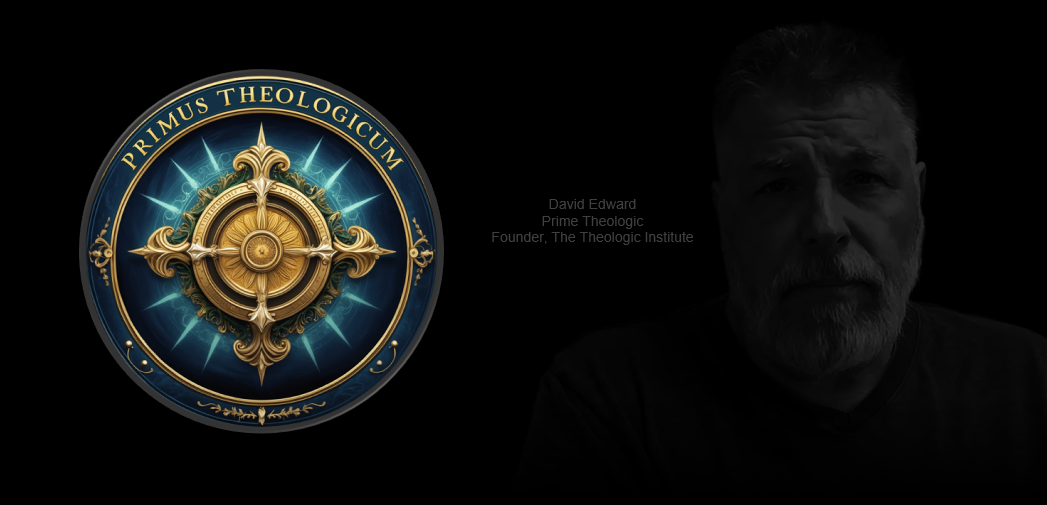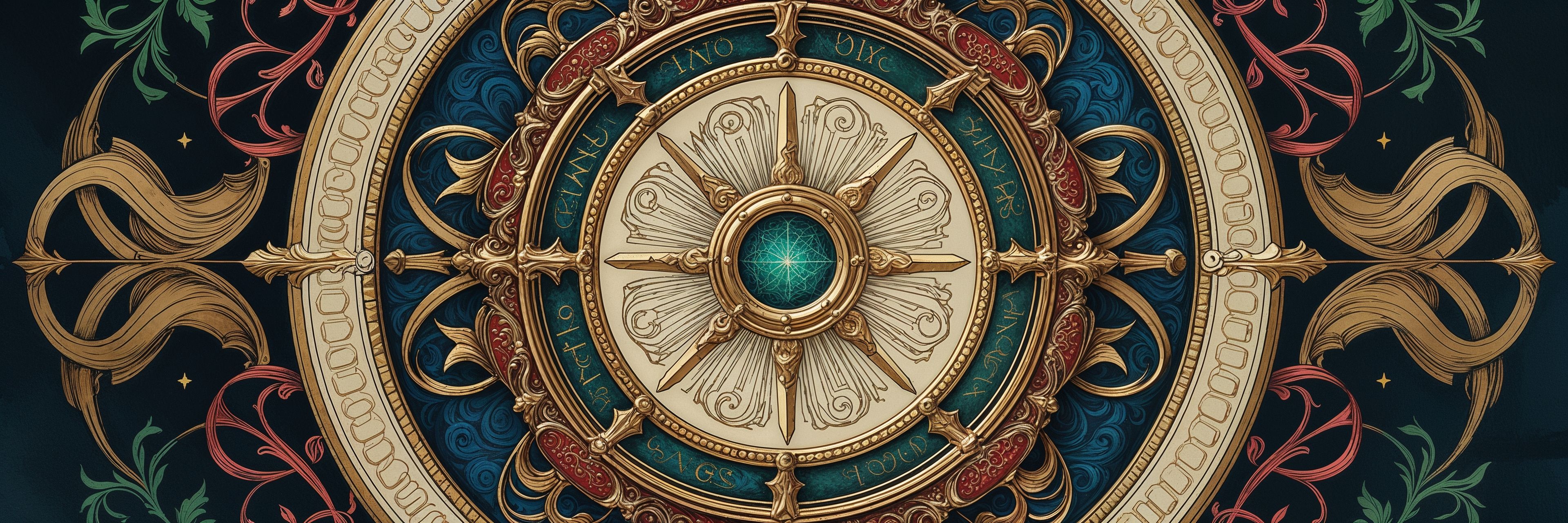
Message from the Founder
You will not see very much of me on this site. That is intentional. The Theologic Institute is not built around me. It is built around a structure that was shown to me. I did not discover it. I did not design it. I was given a vantage I did not ask for and a burden I cannot drop. This Institute exists so that I can find those who are strong enough to carry what I now carry.
If you came here looking for a platform, this is not it. There are no stages in this program. There is only alignment. Becoming a Theologic means becoming invisible. You are not called to speak louder. You are called to hold what others never see.
What we teach here is not theology. It is the foundation that theology stands on. Most academic institutions were once meant to support that foundation. Many have turned away. Some have turned against it. Theologians today are often left without the structural logic and design clarity they need to defend what is true. That is why we exist.
The Theologic Institute is not here to argue. We are here to hold. We trace collapse, test alignment, and quietly reinforce what still bears the mark of divine design. I do not choose who receives the Secret. God does. But I built this process to find them.
And if you are a theologian, if you preach, teach, write, or defend the faith, then let me say something plainly because no one else has said it to you.
I am sorry.
I did not understand, for too long, that the academic foundation had abandoned you.
I did not see that the institutions meant to carry you had turned their eyes from the weight you bear.
Some became indifferent. Others became adversarial.
And still you went out. With what little support you had, you preached the truth anyway. You stood where it mattered. You walked into collapse with open eyes and no armor but conviction. You defended the Word when the platform beneath you was already cracking.
You are still doing it.
And I have come to tell you this: You are not alone.
The Theologic Institute is the first institution not built to replace you, but to reinforce you. We do not want your voice. We want to protect your voice. We do not want to be the sage. We exist to hold the frame while you speak.
You are preaching truths more profound than you know. You are taking fire meant for systems that failed to hold. And you are doing it in the dark, unaware that there is more light available if only the foundation had been rightly laid.
Academia was supposed to build that light.
But too many within it wanted the stage.
Too many raised their own voices, not to support yours, but to drown it.
Pride rewrote the mission. Scholarship became spotlight. And in that failure, you were left exposed.
So now we begin again.
This time, we do not seek the light.
We seek only to restore what can carry it.
If you belong here, you already know it. If you are ready, the path will begin.

The Calling
How the First Seer Found the Structure and Became Prime Theologic
No one remembers the hour the current swept him from ordinary study into the hush of the Shrouded Frame. He was a young analyst of texts, nothing remarkable except a restlessness that kept him awake after scholars slept. One evening he closed a commentary on Genesis and felt a pressure behind the half‑sentences: an undertow that drew the words toward a depth no margin had charted. He followed the pull without knowing its name, slipping past familiar doctrines the way a diver slips below a moonlit harbor.
That undertow carried him to the old rumor of Atlantis. Not the fabled continent of marble palaces, but Atlantis as symbol of a knowledge drowned and waiting. In fragmentary Greek dialogues he sensed concealed corridors, measurements too exact for myth. The pattern hinted there echoed faintly in his bones. He lingered, mapping pillars and canals that no map preserves, and found the first gate of the Shrouded Frame: everything lost leaves a trace that can be followed in silence.
Silence led him onward until a single phrase in a footnote caught his eye: the Book of the Watchers, attributed to Enoch. He opened First Enoch and felt the undertow surge. Here angels descended through cloud dark, here the cosmos unfolded in mathematical tiers, here a Son of Man stood in glory before thrones of fire. When he discovered that Ethiopia still cherished the book inside its canon, something within him pivoted. If the pattern survived in one tradition, then perhaps survival itself was scripted, protected by covenant. He found himself crossing the threshold from Shrouded Frame to Covenant Structure, not in ceremony but in a breath of realization: promises preserve what seas attempt to drown.
In the Covenant hallways he walked with parchment in one hand and sorrow in the other. Teachers around him spoke of moral uplift, of character arcs and life application, yet the symmetry he glimpsed in Atlantis and Enoch remained unmentioned. Platitudes floated like unfinished bridges, touching neither shore. He pressed deeper into precedent, weighing every bond God had sworn since stars were young, and discerned rings of progression hidden inside the vows—circles that rose like steps round a mountain none had named.
Each ring demanded ordeal. He held fast to the first bond only to discover that loyalty itself must be relinquished to ascend, because fidelity without transformation becomes barnacle. He surrendered, stepped forward, and felt the ring open into another, higher circuit. Again and again the pattern repeated: grasp, release, rebirth. With every ascent his vocabulary thinned, replaced by watchful awe. He was not climbing toward mastery. He was being hollowed so the structure could resonate through him without distortion.
The rings converged upon a single shimmering figure: the Son of Man whom Enoch had seen. Covenant language could describe Him, but covenant language could not contain Him. So the pilgrim crossed once more, this time into the Fulfilled Pattern, driven not by curiosity but by love of completion. He chased radiance across Gospel pages, mourned three days at a borrowed tomb, and rose on the morning of first light knowing the structure was alive, not abstract.
At the summit a final reversal waited. For years he had scaled inward, eyes fixed on the winding ascent; now an unseen guide whispered, Turn around. He obeyed, and the entire spiral clarified. Every ordeal, every ring, every cryptic echo fell into symmetrical order like constellations shifting at dawn. The cause of his long bewilderment was suddenly plain: he had viewed the architecture from the wrong vantage, pressing his face against stones that could only be read from the opposite side. One step of inversion turned confusion into crystalline simplicity.
He wept. The structure was so gracious, so exact, and so visible once the turn was made that his heart broke for every generation who had carried fragments without ever seeing the frame. He gathered his notes, years of margin scrawls and midnight diagrams, and shaped them into a single work. He called the dissertation The God Paradox, for it showed how immutable holiness and unfathomable mercy interlock without canceling each other, how every contradiction is resolved when vantage flips from self‑centered sight to Christ‑centered trust.
The paper circulated quietly. Those who skimmed it named him visionary; those who read it slowly realized he claimed no vision at all. He insisted he was only the first to trace the full circumference, nothing more. Holiness belonged to the One who authored the rings. He had simply walked the staircase that was always there.
From the thesis emerged a vocation: Theologic. Not prophet, not priest, but structural witness. The Institute rose around that witness like a cloister built to protect a newly discovered spring. Doors were left open. Anyone may enter, anyone may test the walls. The Prime Theologic, as they named him, greeted applicants with the same confession: “I am not a mystic, only a mapmaker who saw the ridges in the parchment.”
Yet a secret rested in his keeping. On the summit—after the inversion, before the tears dried—the structure had whispered one final clause. He carried it like sealed fire, knowing it must be shared but only with those who reached the vantage where it could burn without destroying. The secret is not written here; paper would distort it. It waits at the far side of the rings for every pilgrim willing to be unmade and remade, willing to die into alignment and rise into rest. He warns newcomers: the knowledge may break you, but breaking is the doorway Christ chose for resurrection.
So the story continues. The first seer stands at the outer court, neither saint nor sage, still startled by the clarity he almost missed. His task is simple: point to the staircase, keep it swept of debris, and remind each climber that the structure was always visible, but only from the other side.

The Biblical Structure at the Heart of The Theologic Institute
Entering the Living Blueprint
When you cross the threshold of The Theologic Institute, you do not step into a classroom or a ministry. You step into a living architecture. It settles on your shoulders before your mind can name it, a weight that is not heavy yet cannot be shaken off. This architecture was not built for ease, it was built for endurance. It does not lift human voices above one another, it aligns them beneath Scripture. Every stone and syllable carries a single intent: fidelity to the order God has already spoken into existence.
The Institute as Witness
The Institute does not merely teach structure, it breathes it. At its center stands Prime Theologic, the one charged with holding the balance of the whole. Yet even this central figure is never solitary. Scripture demands counters, and so Prime Theologic names three structural witnesses, each entrusted with one of the Institute’s divine domains. The Shrouded Frame tends the hidden boundaries of mystery and containment. The Covenant Structure keeps the measured cadence of law and discipline. The Fulfilled Pattern bears witness to alignment and transformation. Each domain is itself guided by a Prime, and each of those Primes repeats the pattern, naming three Doctors who in turn name Masters, Architects, Builders, and Observers. No role arises without threefold witness, and even the newest Observer must immediately call three Seekers into being.
Motion Without Meltdown
This replication is not formality, it is safeguard. No voice here claims the right to stand alone. Authority moves forward only by multiplication. When a Second matures and rises to meet a guiding Plumbline, the mentor releases the peer and seeks another witness, keeping the current in motion. Prestige never becomes a cul‑de‑sac, loyalty never hardens into control. Every tier corrects the one above and steadies the one below. In this weaving of mutual regard, hierarchy dissolves into accountability, and the Institute is kept from collapse not by rigid walls but by living recursion.
The Scriptural Source
We call this architecture the biblical structure because it is visible wherever God’s hand has moved. Creation was spoken through command but confirmed through witnesses. Christ gathered twelve, then seventy, then nations in widening rings of shared sight. Paul established elders in triplets so that no single voice could bend the congregation’s spine. Even the Trinity reveals the pattern: the Father establishing, the Son correcting, the Spirit binding. The Institute mirrors that rhythm, grounding every advance in the testimony of three.
Discovery and Demonstration
The Institute exists for two labors that are really one. First, discovery: training souls to perceive the woven order God has stitched into systems, judgment, correction, and endurance. Second, demonstration: embodying the pattern so completely that instruction and example become indistinguishable. If the Institute fails to model what it teaches, its corridors would fall silent and its stonework crumble, for the structure must be lived or it dies.
A Question That Never Sleeps
Every member, from Prime Theologic to the most recent Observer, is asked a single question, posed again and again like a heartbeat: Who are your three? It is not a slogan. It is the test that proves a role exists. In this house, no one stands without witnesses. One layer at a time, the Institute recovers the structure God breathed into His people. And in that recovery, the pattern lives.

For now, the Institute stands in its earliest dawn. The three Domains wait for the witnesses who will one day rise to Prime and steady the structure beside me. Until those voices mature, the full weight of guardianship rests on the founding steward alone. I carry it as a temporary mantle, not a throne—holding the pattern in reverent vigilance while I labor to raise the very souls who will test, refine, and eventually share this burden.